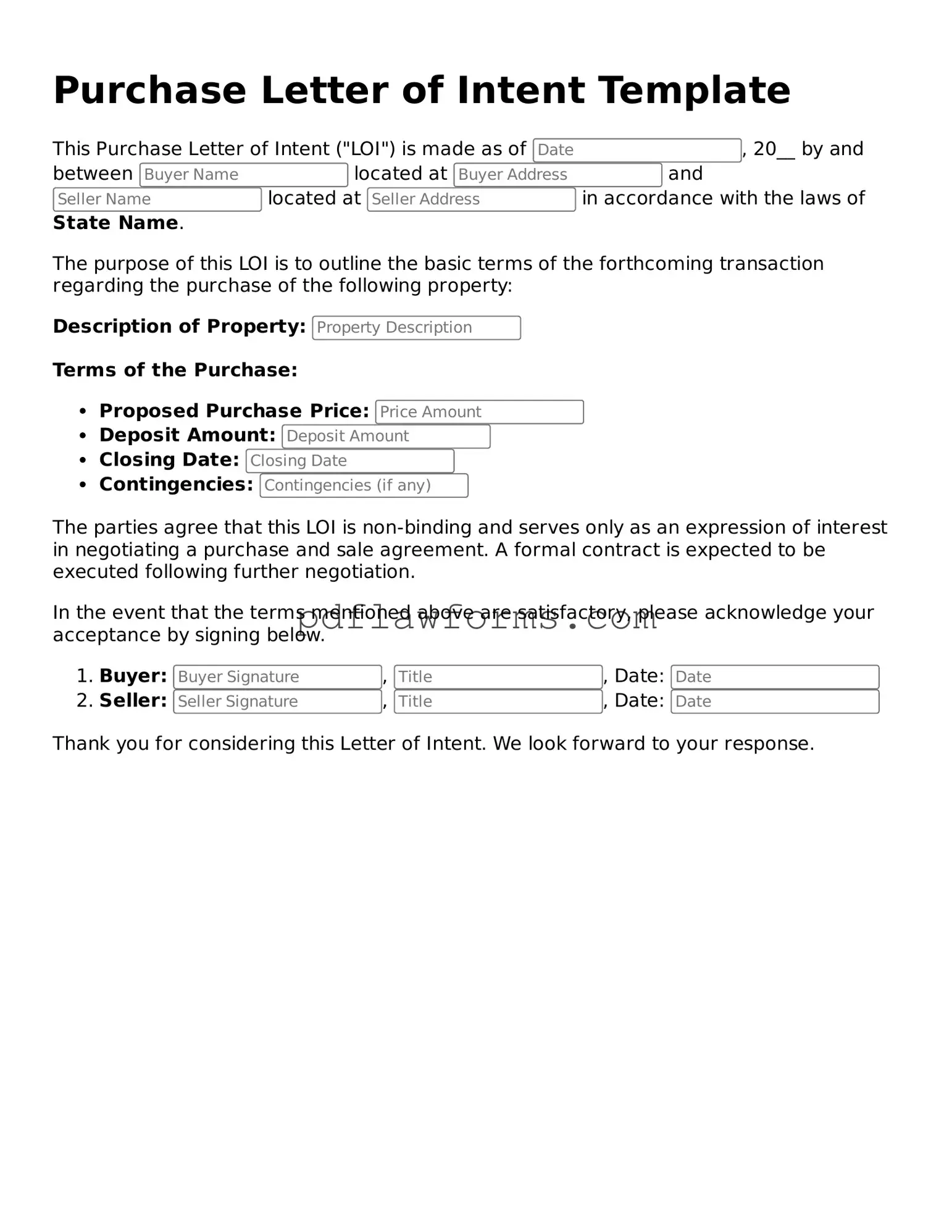When individuals fill out a Purchase Letter of Intent (LOI), several common mistakes can hinder the process. Understanding these pitfalls can help ensure a smoother transaction. One prevalent error is failing to include essential details about the property. Buyers often overlook specific information, such as the property address or legal description, which can lead to confusion later on.
Another frequent mistake is neglecting to clearly define the terms of the offer. Without a clear outline of the proposed purchase price, payment terms, and contingencies, misunderstandings can arise. Buyers should ensure that all terms are explicitly stated to avoid ambiguity.
Additionally, some individuals forget to include a timeline for the transaction. A Purchase LOI should specify key dates, such as when the buyer expects to complete due diligence or when the closing should occur. Omitting these details can create uncertainty for both parties involved.
It is also common for buyers to skip the section regarding the earnest money deposit. This deposit demonstrates the buyer's commitment to the purchase. Failing to mention the amount or conditions surrounding this deposit can raise concerns about the buyer's seriousness.
Another mistake involves not addressing the confidentiality clause. Many buyers assume that all discussions are private without explicitly stating it in the LOI. Including a confidentiality clause protects sensitive information and fosters trust between the parties.
Furthermore, buyers sometimes forget to sign the document. An unsigned LOI is not legally binding and can lead to complications. Ensuring that all necessary parties sign the document is crucial for the validity of the agreement.
Finally, individuals may overlook the importance of consulting with legal or real estate professionals. Relying solely on personal knowledge can result in missed opportunities or legal complications. Seeking expert advice can help clarify the process and ensure that all aspects of the LOI are properly addressed.
